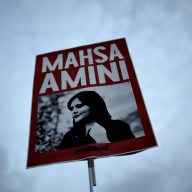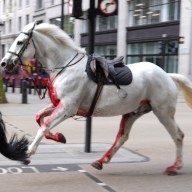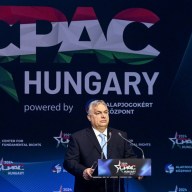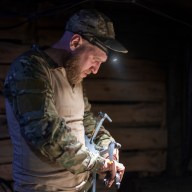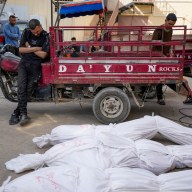David Gordon Green is all over the place. You wouldn’t expect the maker of intimate indies like “George Washington” and “All the Real Girls” to one day make studio weed comedies like “Pineapple Express” and “Your Highness,” or even to write the foreword for “Seagalogy,” a book-length study of the cinema of Steven Seagal. A big film like the political satire “Our Brand is Crisis” makes slightly more sense. It could be a heavy-handed film about evil Americans (led by Sandra Bullock’s noted campaign consultant) gleefully harming the political climate of another country (in this case, Bolivia). Instead, in Green’s hands, it’s more of a rollicking comedy. Releasing a political comedy during this unusually nutty presidential trail is good timing.
This was actually the quickest production-to-release I’ve ever had on a movie. Usually you have to wait a year or two after you’ve shot it. I literally finished this move in July, and now it’s coming out. We were going to release it next year, then we showed it to the studio and, given the political climate of what’s going on right now, they said, “Let’s put it out this fall.” We were like, “Alright.” [Laughs] Once Trump starting stirring it up, we thought the conversation was too irresistible to pass up. Everyone may get sick of him any day now.
Exactly. Strike while it’s hot.
RELATED: Zoe Kazan on “Our Brand is Crisis” and how she has no time for new movies Did you view this as primarily a political film?
I just looked at it as an entertaining film. I wanted to make something that was entertaining. I just think about my favorite movie, “Thunderbolt and Lightfoot.” It’s got Clint Eastwood and Jeff Bridges, a cool cast, beautiful scenery. It touches you sometimes, it makes you laugh sometimes, it kicks ass sometimes. It’s got a little of everything. It doesn’t change the world, but it’s there for enjoyment, repeat viewings and conversation. That’s what I set out to do, to make something that has some social relevance, political timeliness and a good bit of humor. Is “Thunderbolt and Lightfoot” your official favorite movie?
It is my official favorite movie. [Laughs] It’s the movie I watch the most. It’s the movie that as the most things I love in it.
It’s been awhile, but one thing that immediately comes to mind is Clint Eastwood posing as a priest in that church in the middle of nowhere.
I think about Bill McKinney shooting rabbits out of the back of his car. [Laughs]
You’ve often talked about unexpected films that inspired your own movies. Were there ones for this?
For this film it was more about research and hanging out in Bolivia. There is that wonderful Chilean film, “No,” though. [Ed. Another satire about politics involving an ad guy, played by Gael Garcia Bernal, who gets involved in a campaign. Its great.] But in terms of influence there wasn’t anything that really hit what I was trying to hit. I was intimidated by the size of the ensemble, being able to cover that many characters. So I was watching Robert Altman movies, because he does that so skillfully. He has a nice, fluid way of covering seven people in a room. A lot of this film is seven people sitting at a table. How do you make that not boring? And he’s really good at keeping the camera alive and keeping the characters checked-in editorially. A movie I’m not the biggest fan of but I looked at because it had some relevance was “Broadcast News.” It has a nice balance of wit and heart. Michael Ritchie movies were key. “The Candidate”’s an obvious one. Even “Downhill Racer” has a nice style. I would show the camera department “Downhill Racer” because it has a really cool, kind of groovy ’70s sensibility without being hip or overly stylistic. Your indies tend to be have a very handcrafted feel to it, but it seems even a studio film like this had lots of room for being loose.
We had two cameras with zoom lenses. We’d do these dueling cameras where we set up two dolly tracks and we’d cover most of the scenes like that. We let it be improvised and every take was different. There were no storyboards or shot listings, apart from a couple scenes with stunts and effects. We’d let it loose. I’d say, “Let’s not say the same conversation.” We had overlapping dialogue. We’d play those games to help the dialogue pop a bit, which is not something I’ve done too much in my career. Even the actors with smaller roles tend to make themselves known through tossed-off one-liners.
I wanted — who doesn’t? — I wanted awesome actors for parts on the page that weren’t much there. If I’m trying to sweet-talk Ann Dowd, who’s once of my favorite actresses, and she’s going to have to be there all time the time but sometimes she’s just sitting there — how do I promise her she’s gonna have some beef? I just let her go and said, “Ann, there’s nothing scripted for you in this scene, but have at it. What would you be saying? What would you be talking about?” With Scoot McNairy and Zoe Kazan, same thing. Even if their parts where smaller in terms of page count, I still wanted a real presence in every performer. RELATED: Scoot McNairy says “Our Brand is Crisis” isn’t just about politics You had done a handful of indies, “Prince Avalanche,” “Joe” and “Manglehorn” in a row. How did that change your approach to studio filmmaking?
Those were all made with me living at home, sleeping in my bed in Austin, Texas and really simplifying and stripping down the filmmaking process to just what I love. Those three movies did that for me. They really ignited me to a love of actors and performers. Sandra had seen “Joe” and wanted to talk to me about this. I told her and George [Clooney, producer], “Let’s give me that same process but with a big canvas and a big backdrop. It was an indie movie at the same time it was a studio movie; it was a comedy at the same time it was a drama. I got to dabble in all the inconsistencies of my career and make it streamlined. And it’s rare for studio films these days to be about real-life subjects.
It’s true. But coming off of “Gravity,” Sandra can do whatever she wants. I’m just lucky she picked me.
Last question: You’re well-known as a voracious movie watcher and reader. What are you reading and watching these days?
I’m reading a Jim Harrison autobiography, and I just cracked the Rudolf Wurlitzer book “Drop Edge of Yonder.” I read the story about him and [Jim] Jarmusch when they were making “Dead Man.” There was a collaboration gone wrong, and Wurlitzer ran off and wrote this book. One thing with my workload is I spent a lot of time on airplanes, so it’s good to have a book on hand. So you’d rather read than watch something while flying?
Yeah. Although last night I watched “Kingsman” on the way to [L.A.]. That was entertaining until I fell asleep. [Laughs]
David Gordon Green: ‘Our Brand is Crisis’ was released early due to Trump
Follow Matt Prigge on Twitter @mattprigge






